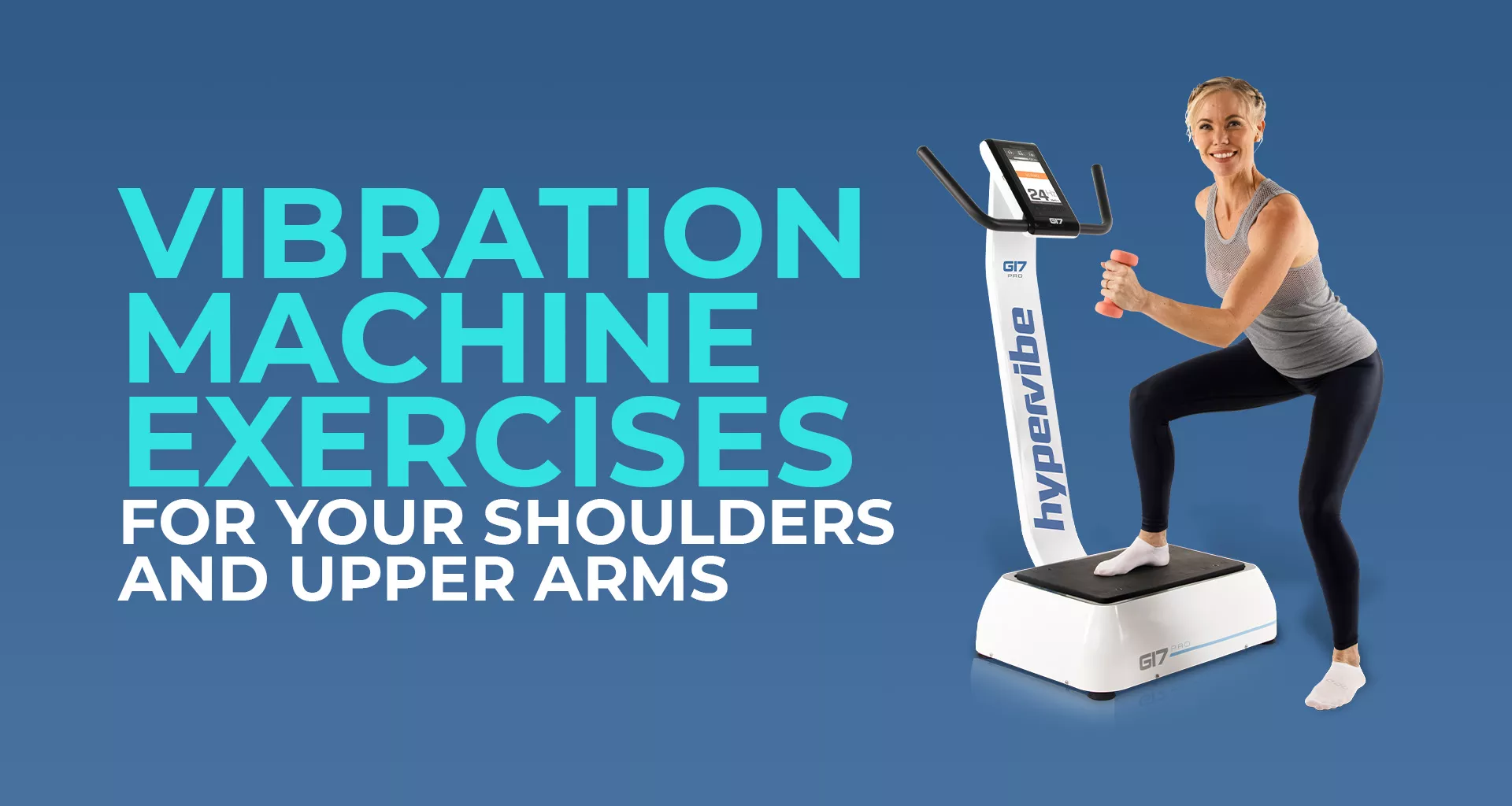
Can Vibration Training (Whole Body Vibration, WBV) help you tone your shoulders and upper arms?
Yes.
Vibration Plates may help you tone your upper arms and shoulders by engaging more muscle fibers and boosting workout intensity—even with simple moves like push-ups, planks, and tricep dips.
Here’s how they work for your upper body:
Brief workout sessions on a Vibration Plate may help burn calories, elevate metabolic demand, and support muscle tone.
These effects are enhanced with compound moves such as push-ups, planks, and tricep dips.
You can also add free-weight exercises to your routine.
Choose a weight heavy enough to challenge you but light enough to perform all exercises safely.
In this article we’ll show you some exercises that can be done on a Hypervibe Whole Body Vibration machine for sculpting the shoulders and gaining definition in the upper arms area.
When we think about toning or losing weight, most of us focus on the abs, hips, glutes, and chest—or on biceps and calves.
We tend to neglect the upper arm muscles and shoulders.
For a balanced, symmetrical look and better posture, you need to work on all body parts, including the shoulders.
The “shoulder” isn’t a single muscle.
To shape the area and create a rounded, defined look, you need to train each part regularly:
Repeating one move (e.g., shoulder presses) won’t cover all these muscle groups.
Alternating movements ensure complete muscle development, better joint stability, and improved upper body strength.
Vibration Training works by sending rapid mechanical vibration, usually between 5 to 35 Hz, through your body.
This vibration, carrying a vibrational force generated by the plate, causes your muscles to contract reflexively against resistance.
These repeated contractions recruit more muscle fibers than traditional exercise alone, making workouts more efficient—even in a few minutes.
As the Vibration Plate moves up and down, it simulates the forces of gravity and makes your muscles work against them.
During upper body exercises, this adds challenge to the deltoids, triceps, biceps, and scapular stabilizers, encouraging strength and tone for these muscles.
The vibration triggers rapid, reflexive contractions in your muscles.
Like when your doctor hits your knee with a reflex hammer.
When your hands are on the Vibration Plate, these reflexes recruit more fibers in the shoulders and arms than the same exercise done off of the machine.
This causes your muscles to work harder with even the simplest exercise positions.
WBV may improve blood flow and lymphatic drainage around the shoulder girdle and arms.
Better fluid movement may reduce stiffness, aid growth, and support recovery.
The instability caused by the Vibration Plate challenges the nervous system.
During the workout, your rotator cuff and scapular muscles work together to keep the shoulder centered,
which can improve posture, shoulder blade control, and movement quality in daily life and lifting.
Vibratory input competes with pain (nociceptive) signals in the nervous system.
For people with neck and upper back pain from prolonged sitting, WBV can make movement feel easier.
Before the exercises, here are some safety basics:
As your strength improves, gradually increase frequency and / or amplitude (increases G-force) and session duration.
Let’s get back to the exercises.
These Vibration Plate exercises for arms and shoulders are organized into three brackets so readers can build a balanced session quickly.
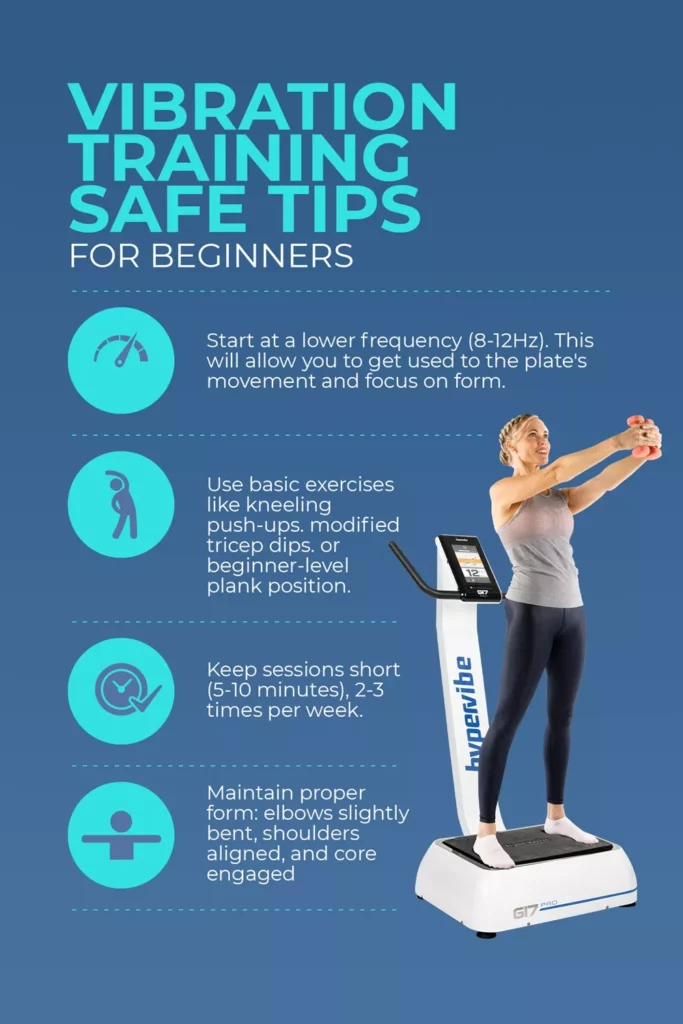
Vibration Training Safe Tips for Beginners
Push-ups target your chest, shoulders, triceps, and core.
Place your hands on the Vibration Plate, shoulder-width apart, with knees (beginner) or toes (advanced) on the floor.
Lower your chest toward the plate slowly, then press back up.
Avoid locking your elbows and engage your core.
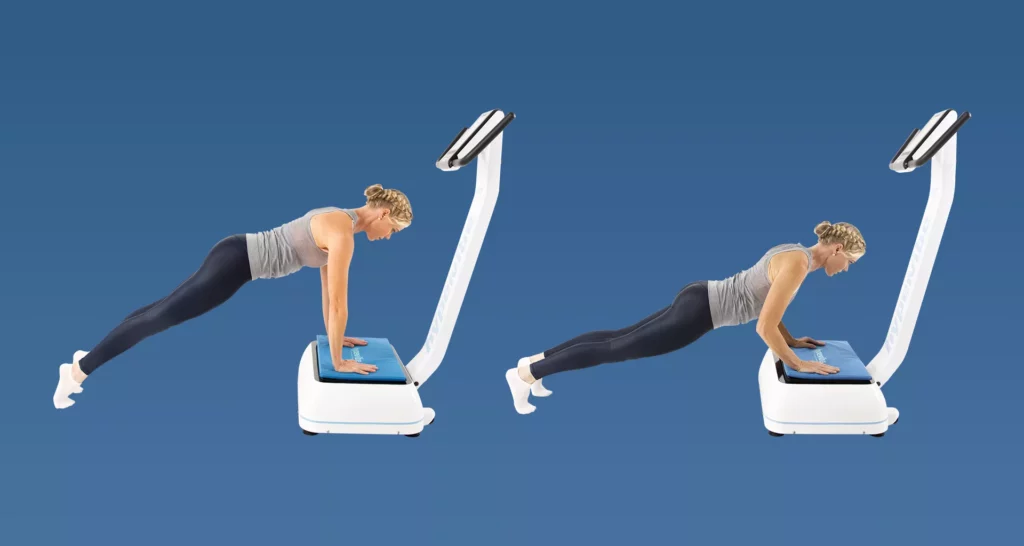
woman performing pushups on a vibration plate
Mainly targets triceps but also works shoulders, upper back, and chest.
Sit on the floor, facing away from the platform.
Place your hands behind you on the plate, shoulder-width apart.
Be careful not to strain your shoulders.
Then, lift your hips up towards the ceiling with knees bent (beginner) or straight out in front of you (advanced).
Slowly bend your elbows, lowering your hips to the floor.
Press back up.
Don’t lock your elbows.
Keep your core engaged and neck aligned.
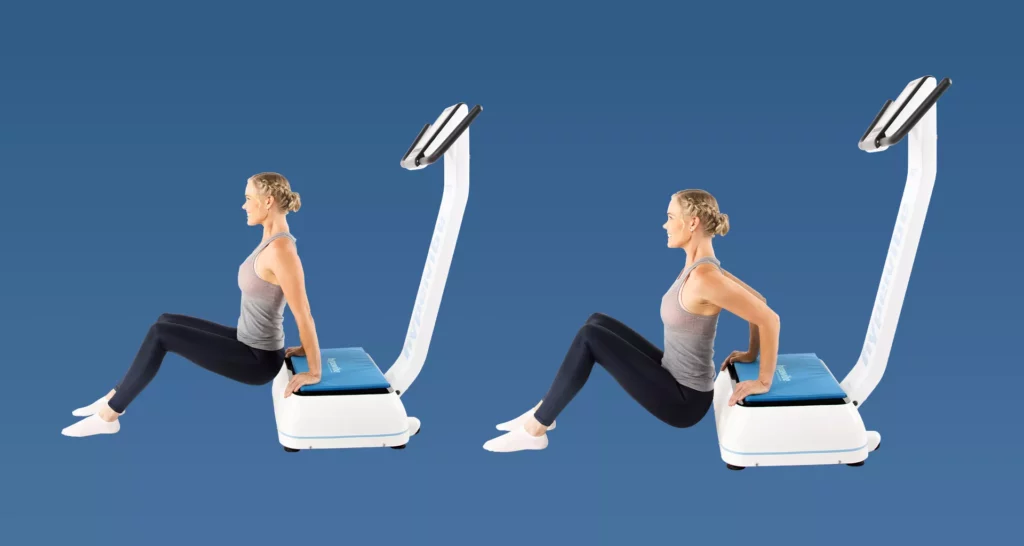
woman performing tricep dips on a hypervibe vibration platform
Strengthens deltoids and triceps.
With dumbbells in hand, stand on the plate with knees slightly bent.
Press weights overhead, then lower slowly.
Do 3 sets of 10 reps.
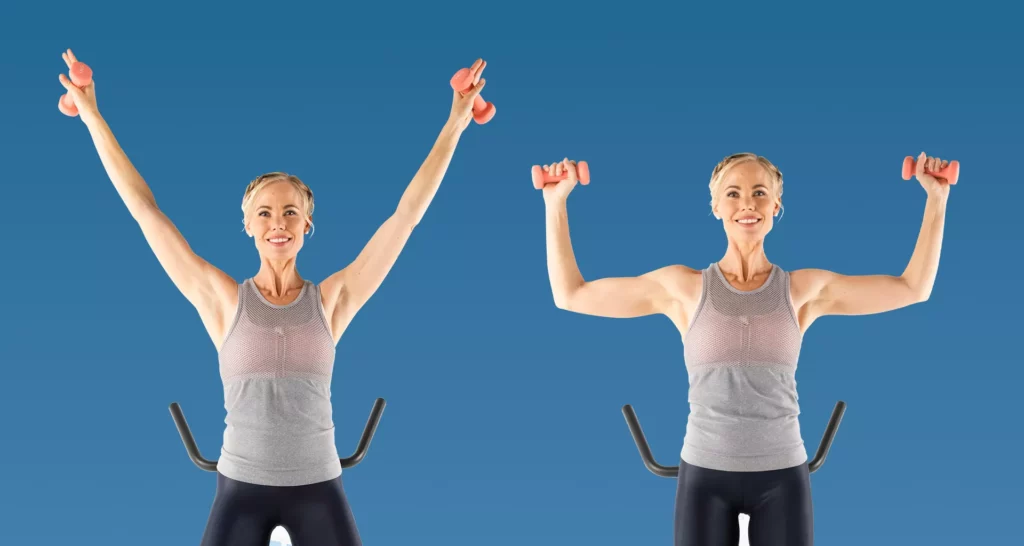
overhead presses with dumbbells
This movement is excellent for toning and shaping your shoulders, arms, and upper back muscles.
It works out rear delts and mid-upper back (posture).
Stand on the vibration plate with feet aligned with hips.
Use a low frequency for an extra balance challenge.
Grab a pair of dumbbells.
Hinge forward (bending at the waist), and keep your spine neutral.
Raise arms to the side to challenge level; 1-sec hold at the top, slowly lower.
Repeat 9 more times, then take a short break and do this exercise 2 more times, 10 reps per set.
You can also do it sitting with feet on the plate if you have problems with your lower back.
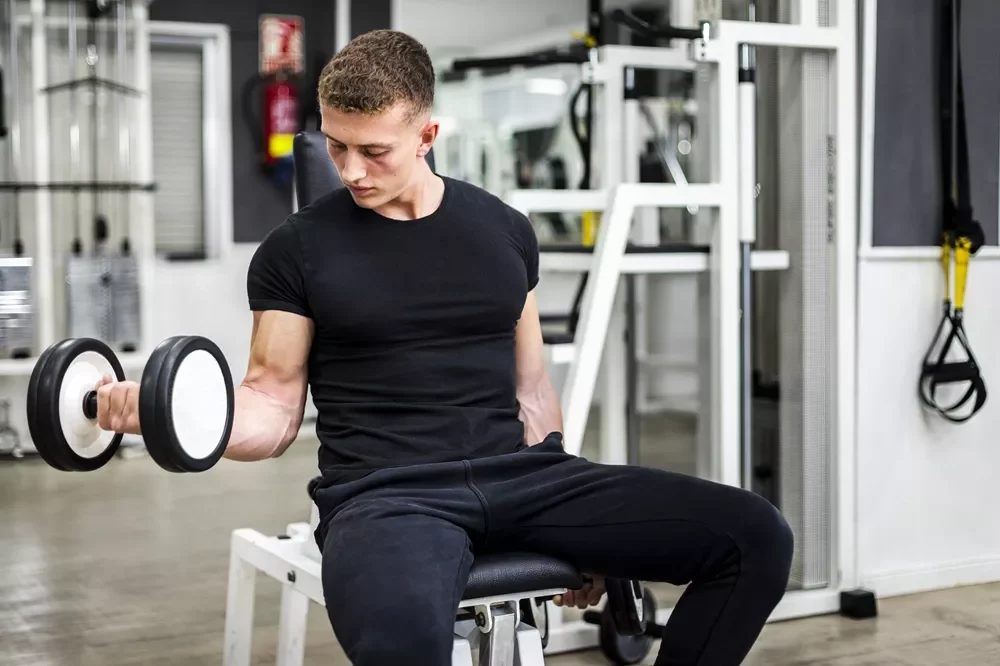
high angle arms practice with weights
This works on rhomboids, mid-traps, rear delts, and biceps.
It uses the stretch bands attached to the Hypervibe machine.
Place your feet on the platform at a comfortable level and activate the core by drawing the belly button in.
Use a low-frequency setting for balance and core challenge.
Squeeze the glutes and grip the bands with your hands, pulling back to squeeze the shoulder blades together.
Maintain the back straight, knees slightly bent, and hips square for stability.
If you need to increase the difficulty, increase band tension or add a 5-sec hold.
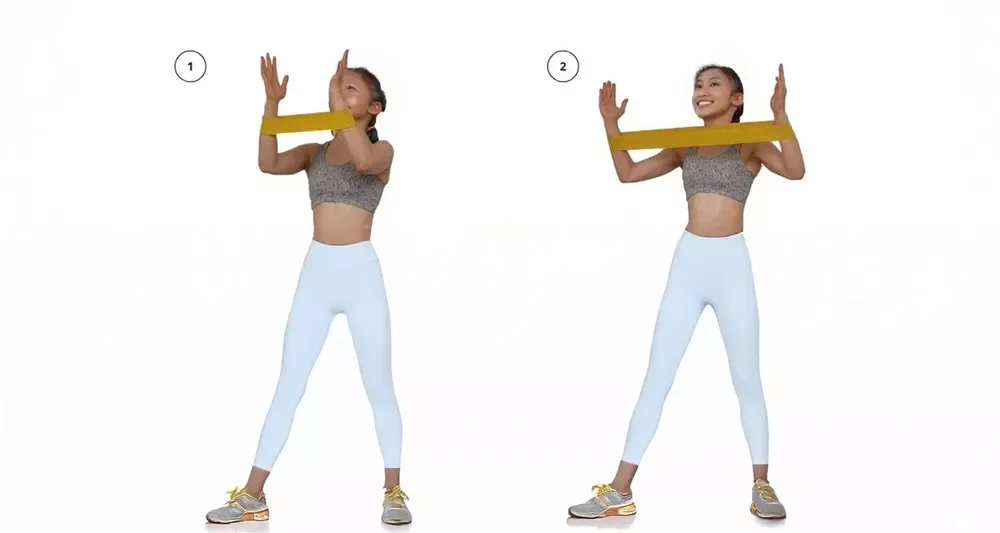
shoulder plade retraction with bands
Strengthens anterior and lateral delts.
Stand with knees slightly bent and raise dumbbells to shoulder height (front or side).
Use a low-medium frequency for postural challenge.

woman doing front and lateral raises on a vibration platform from Hypervibe
While keeping your torso stationary, inhale, and lift the dumbbells to your side until your arm is parallel to the floor.
Then, maintain the position for one second, exhale, and lower the dumbbells slowly, returning to the initial position.
Control the motion on the way down.
Do 3 sets of 10 reps each.
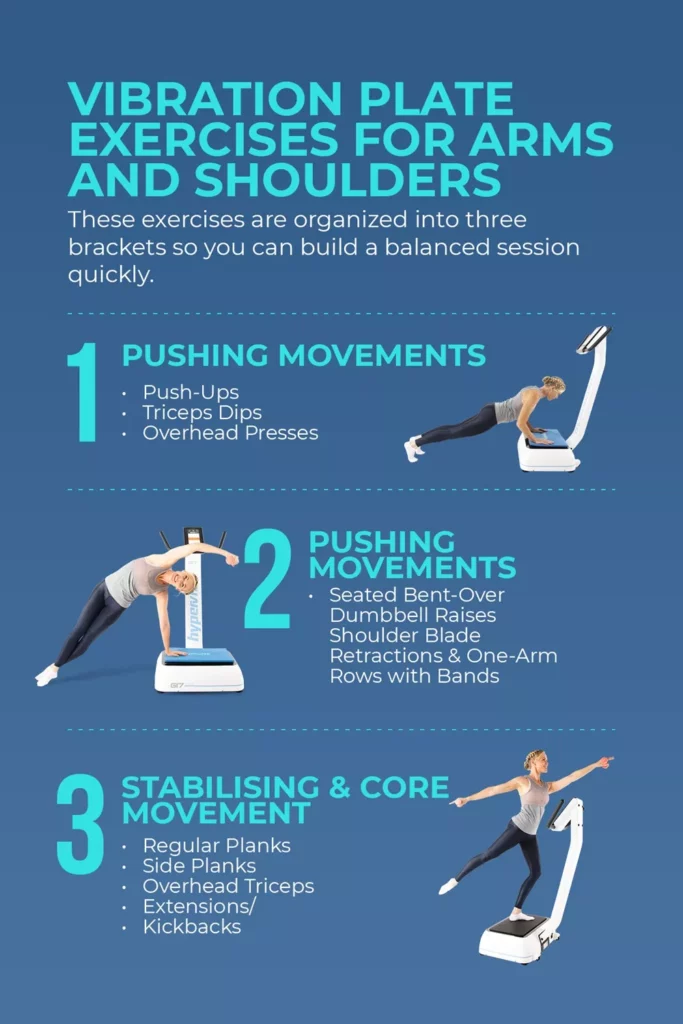
Vibration Plate Exercises for Arms and Shoulders’ showing three exercise brackets
Targets shoulders, rotator cuff, and your core.
Place your forearms (use a thin pad) or hands on the Vibration Plate at shoulder distance and your knees (beginner) or toes (advanced) on the floor.
Keep your core and glutes engaged.
If you can’t do this movement properly with your arms on the platform, switch the position by placing your palms on the ground and feet on the platform.
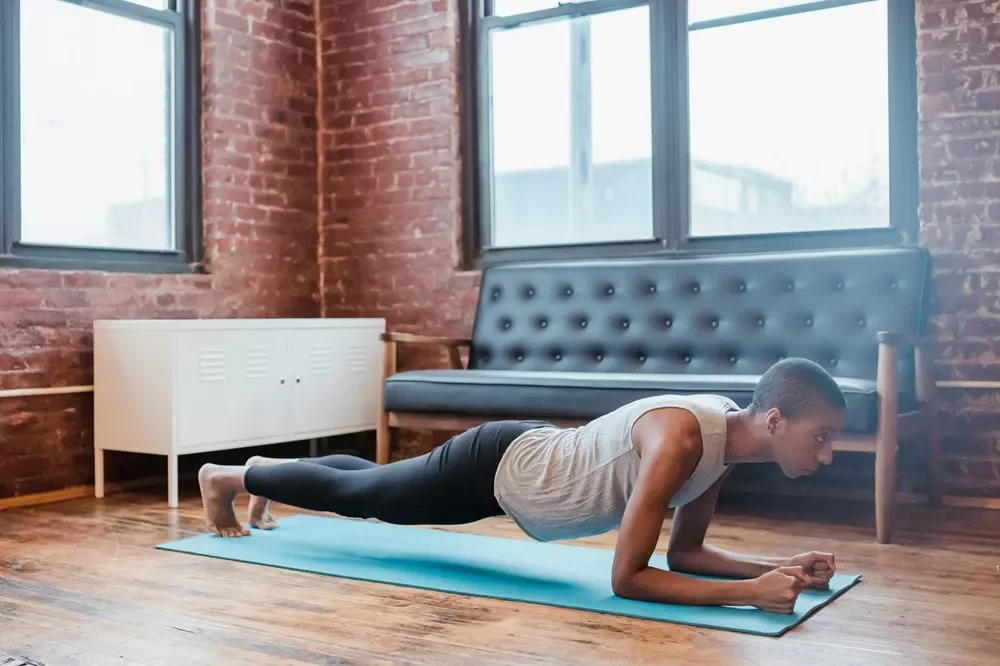
doing a planks on a yoga mat
Targets obliques and lateral abdominals.
Start with your right elbow or hand on the platform.
If it’s not comfortable enough, change the position and place your feet on the platform and elbow/hand on the ground.
Keep frequency low for comfort.
Keep the core engaged for 30 seconds per side, and repeat the exercise for 2 minutes.
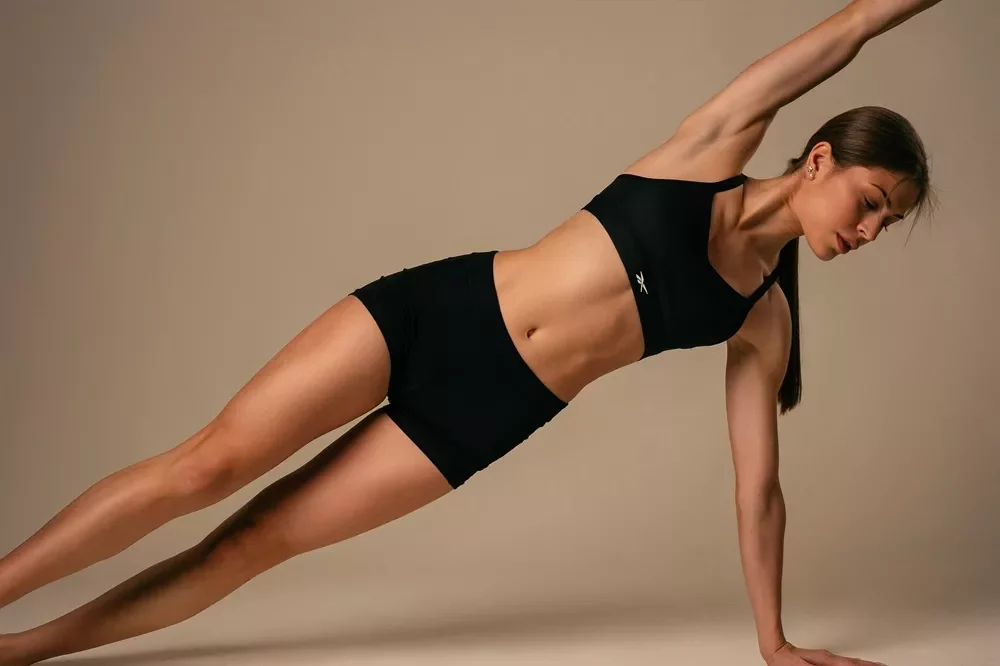
woman doing advanced side planks
Strengthens triceps, shoulders, and arms.
Stand on the platform.
With a dumbbell or Hypervibe cord, lift the right arm so that the upper arm is parallel to the floor,
and contract the triceps by straightening the elbow, hold briefly, and return to start.
Perform 3 sets of 10 reps per side.
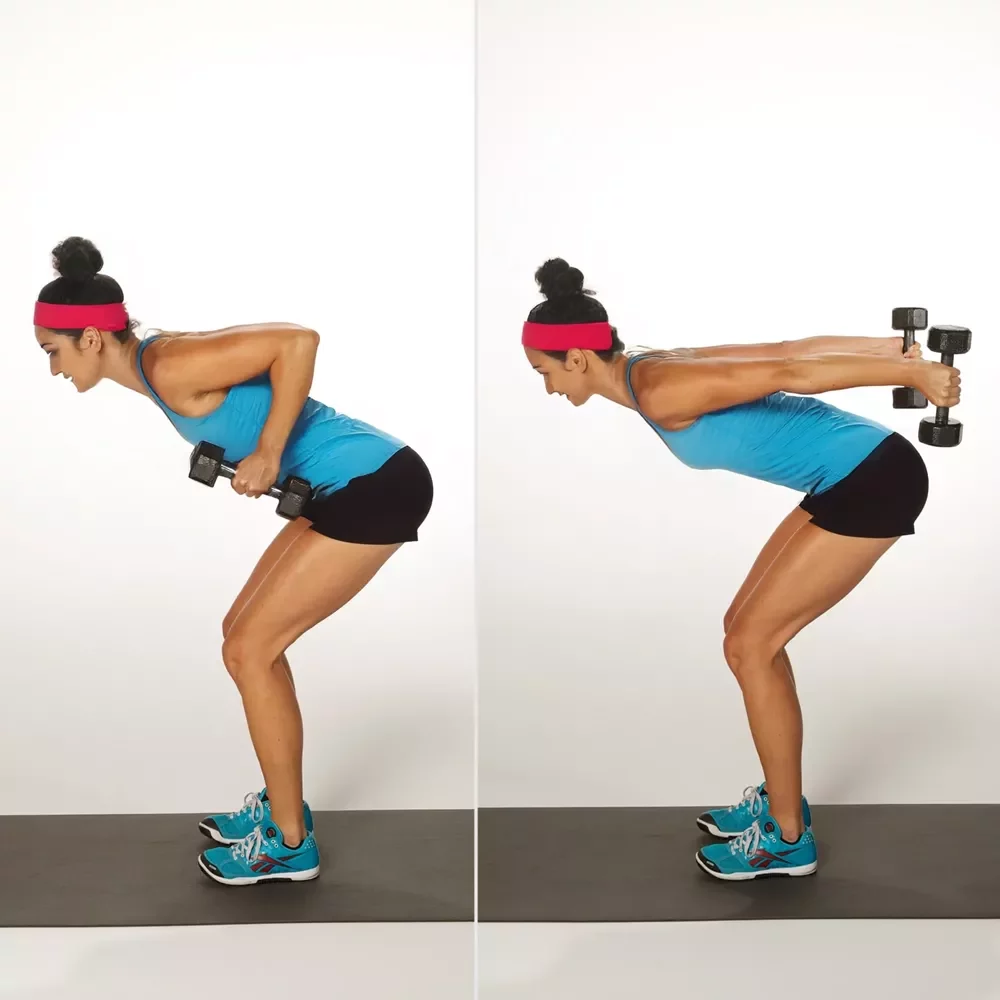
woman doing bent over tricep extensions
Everyone may benefit from Upper-Body Vibration Training, and it is generally safe unless contraindicated.
Certain groups may have particular interest in exercising their shoulders and upper arms.
Below are some common expectations:
Targeted work—such as push-ups on the plate, triceps dips, lateral raises, and band rows with added reflexive muscle contractions—may help firm the triceps, shoulders, and upper back.
These effects are more noticeable when paired with resistance training and a healthy diet.
You may be thinking about spot reduction.
Unfortunately, spot-fat loss is not possible.
You need to exercise your entire body.
Vibration Plates allow you to train the upper body with joint-friendly ranges (incline or kneeling push-ups, band rows, and gentle planks) while also encouraging circulation and balance.
10-minute circuits (e.g., push-ups, lateral raises, tricep dips, and planks) provide a complete upper body workout.
Take about 15-30 second breaks for transitions.
WBV can support blood flow, support lymphatic flow, and build muscle strength.
These are all beneficial to recovery.
For people who already train regularly or experiment with high-efficiency methods, WBV for shoulders and arms can:
Effective WBV movements include:
Advanced users can modify intensity (G-force) by adjusting:
Before you start the routine, warm up/stretch the shoulders for 2–3 min.
Always prioritize form over speed.
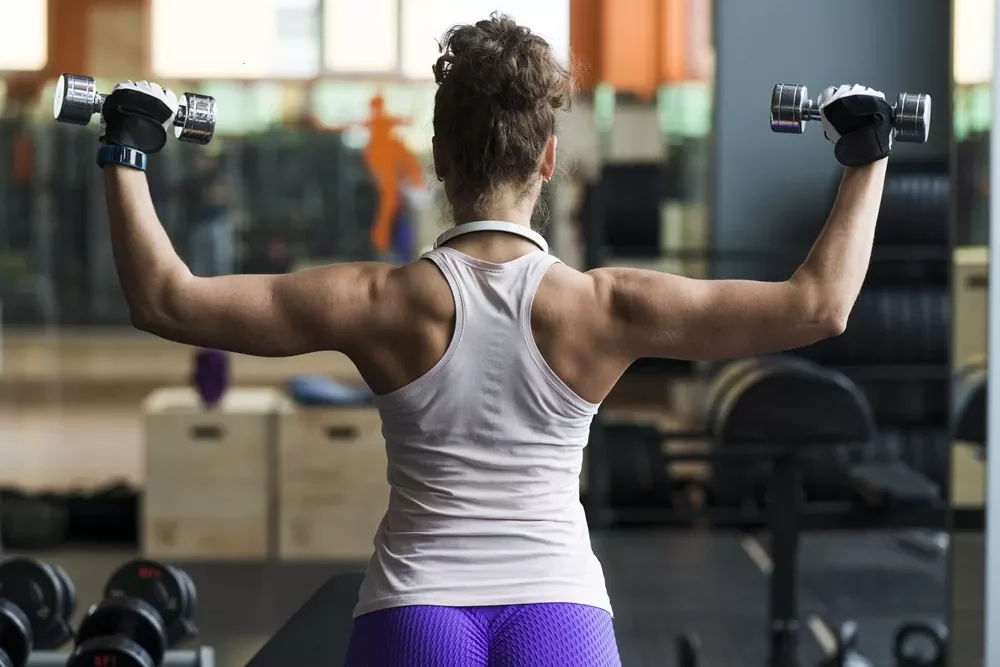
back view woman exercising with dumbbells
This Vibration Plate upper body workout targets triceps and delts for arm definition.
Warm-Up – 5 min – standing on plate at low frequency (8 Hz)
Main Set – 2 rounds (6–8 min)
This is for people managing shoulder pain or joint sensitivity.
Prep – 2–3 min
Circuit – 2 rounds (6–8 min)
Minimal rest, maximal payoff these are your best Vibration Plate exercise for the upper body in quick supersets.
You will do 3 supersets for 2 rounds total.
Work 30–60 s, and rest 15 s between moves.
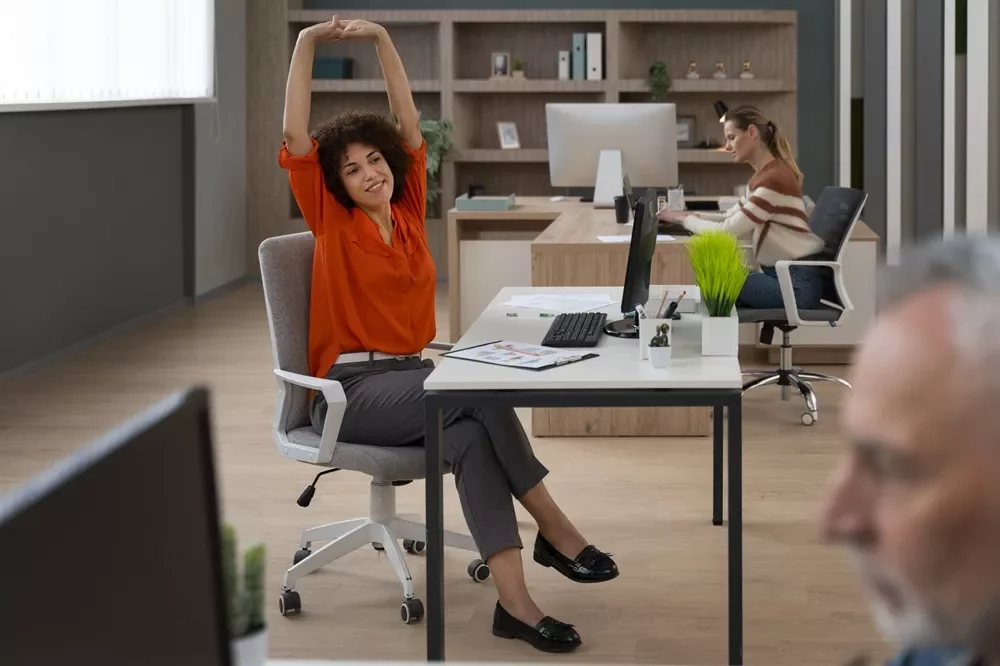
busy professional woman stretching at work
Superset A at 8–15 Hz
Superset B at 8-15 Hz
Superset C at 8–15 Hz
This routine emphasizes isometrics, short bouts, and comfort for those who are recovering from shoulder injuries.
Sequence:
If your symptoms increase, stop. It is advisable to work with a professional when rehabilitating an injury.
Muscle Recruitment and Stability.
For experienced users only.
Primer – 2 min at 10–12 Hz
Power circuit – 2–3 rounds (8–12 min)
Rotate any of these routines based on your needs, aiming for 2–3 WBV sessions per week.
It is also important to note that while Whole Body Vibration is generally safe for everyone, it also has some additional contraindications that need mentioning.
The most common ones are
In case you have any of these conditions, seek medical advice before attempting Vibration Therapy.
Vibration Plate exercises for arms and shoulders stimulate muscles through rapid contractions and resistance via g-force.
When combined with weights or resistance bands, they may help tone the triceps, the area most prone to sagging (commonly called “bat wings”). For best results, stay consistent and support your workouts with a healthy diet.
A Vibration Plate upper-body workout can be ideal for seniors because it’s low-impact and joint-friendly.
Start with seated arm movements (feet on plate) or supported shoulder exercises like arm raises while standing at lowest settings.
Always use the Vibration Platform tower or a chair for balance support, and keep movements slow and controlled.
You only need 10 minutes.
Vibration Plate arm exercises engage multiple muscle groups efficiently.
Try short circuits of push-ups, band rows, planks, and triceps dips on the platform.
This is an effective way to tone arms and work your core, even with limited time.
Focus on triceps dips, bent-over lateral raises, and arm extensions.
These exercises may help strengthen the back of the upper arms where bat wings form.
Add dumbbells or resistance bands for an extra challenge.
Yes, if done correctly.
Start with low vibration settings, use a chair with feet on the plate, or handles for stability while working one arm at a time.
Stop immediately if there is pain or discomfort.
Using a Vibration Plate during recovery may improve blood flow, reduce stiffness, and gently activate muscles to flush out waste that’s built up.
Always begin with low settings and work under the guidance of a physical therapist or other practitioner to avoid reinjury.
WBV may also help support range of motion and circulation.
Hypervibe machines are performance-tested and designed with medical input.
They offer wide frequency ranges (5–35 Hz), pivotal motion for joint safety, and stronger G-force for effective muscle stimulation.
This makes them well-suited for safe, effective arm and shoulder training.
Yes.
Hypervibe provides access to guided workout programs for all fitness levels.
Whether you want to tone your arms, strengthen your shoulders, or support recovery, there’s a plan available.
Many physical therapists and other professionals use or recommend Hypervibe because the pivotal movement reduces joint stress while still activating muscles.
Its customizable settings make it suitable for rehab, beginners, and anyone seeking safer upper-body workouts.
The ideal platform should support safe, progressive training and accommodate your long-term goals, whether you’re toning your arms, recovering from injury, or enhancing athletic performance.
While popular models like the Power Plate Move offer certified frequencies and a reputation in professional settings, Hypervibe delivers unique benefits for home users and clinics.
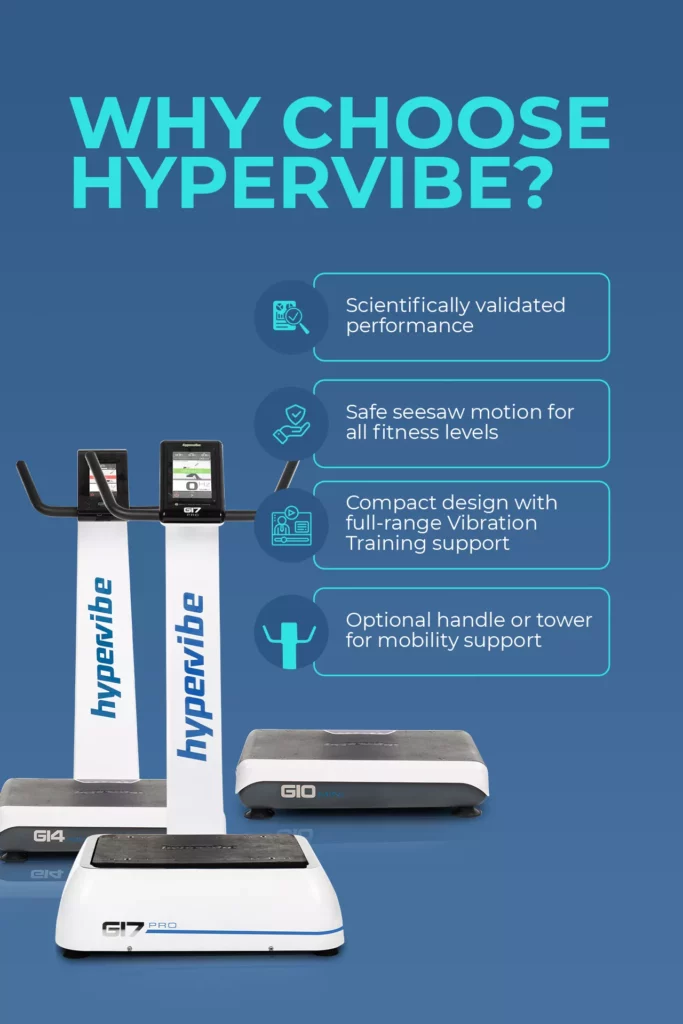
Why Choose Hypervibe’ with checkmarked list of benefits scientifically validated performance, safe seesaw motion, compact design for full vibration suppor
Hypervibe stands out for its
Hypervibe combines quality, science, and usability in one powerful platform.
Vibration Plate exercises for shoulders and arms offer a high-return way to:
Download our free Buyer’s Guide to choose the right Vibration Plate for you.
If you’ve been looking for a routine that fits into busy days, supports vulnerable joints, or even aids in shoulder rehabilitation, the sample workouts above are designed for you.
Start slow, focus on form, and gradually increase time or intensity.
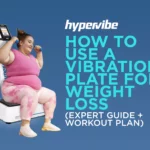
Here’s how we use a vibration plate for weight loss...
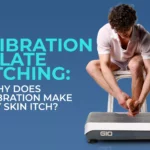
Many people, especially beginners, notice an itchy or tingling “pins-and-needles”...

Taking into consideration the growing popularity of the vibration plate,...

The lymphatic system, also called the lymphoid system, is an...
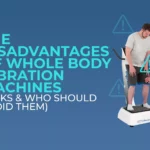
Are vibration machines bad for you? Yes, if used incorrectly....